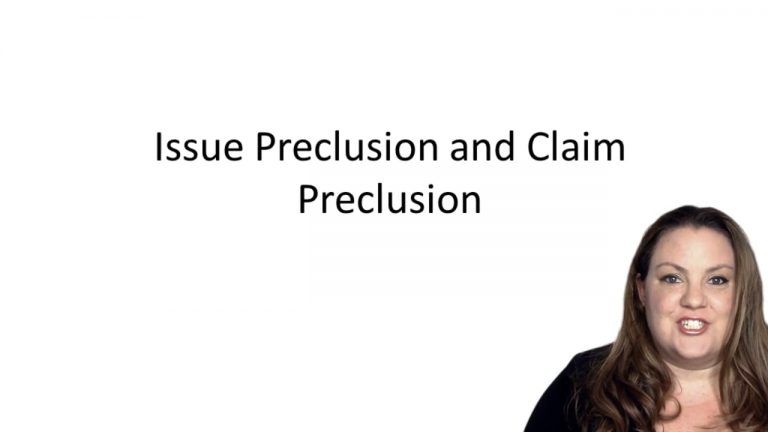Civil Procedure Keyed to Friedenthal
Hansberry v. Lee

ProfessorBrittany L. Raposa
CaseCast™ – "What you need to know"
Facts
Plaintiffs, class of landowners, brought suit in Illinois state court to enforce a restrictive covenant. The covenant provided that it was not effective unless it was signed by 95% of the owners of the frontage. Defendant Hansberry, an African American, purchased some of the land from an owner who had signed the agreement. The suit was brought to enjoin the sale as a breach of the covenant. An earlier Illinois state court action established that 95% of the owners had signed the covenant. Defendant argued that res judicata did not bind Defendant by this judgment because they were not parties to the action nor were they in privity with the parties or successors in interest. Defendant also argued that it would deny them due process if the prior decision was binding. The Circuit Court held that the issue was binding even though they found that only 54% of the owners had actually signed it. Although the stipulation was untrue, it was not fraudulent or collusive. The Supreme Court o f Illinois affirmed, saying that it was a class action and therefore was binding on all the class members unless reversed or set aside in direct proceedings. Because the sellers of the land to Defendant were members of the class, Defendant was bound by the decision as well. Defendant appealed.
Only StudyBuddy Pro offers the complete Case Brief Anatomy*
Access the most important case brief elements for optimal case understanding.
*Case Brief Anatomy includes: Brief Prologue, Complete Case Brief, Brief Epilogue
- The Brief Prologue provides necessary case brief introductory information and includes:
Topic:
Identifies the topic of law and where this case fits within your course outline.Parties:
Identifies the cast of characters involved in the case.Procedural Posture & History:
Shares the case history with how lower courts have ruled on the matter.Case Key Terms, Acts, Doctrines, etc.:
A case specific Legal Term Dictionary.Case Doctrines, Acts, Statutes, Amendments and Treatises:
Identifies and Defines Legal Authority used in this case.
- The Case Brief is the complete case summarized and authored in the traditional Law School I.R.A.C. format. The Pro case brief includes:
Brief Facts:
A Synopsis of the Facts of the case.Rule of Law:
Identifies the Legal Principle the Court used in deciding the case.Facts:
What are the factual circumstances that gave rise to the civil or criminal case? What is the relationship of the Parties that are involved in the case.Issue(s):
Lists the Questions of Law that are raised by the Facts of the case.Holding:
Shares the Court's answer to the legal questions raised in the issue.Concurring / Dissenting Opinions:
Includes valuable concurring or dissenting opinions and their key points.Reasoning and Analysis:
Identifies the chain of argument(s) which led the judges to rule as they did.
- The Brief Prologue closes the case brief with important forward-looking discussion and includes:
Policy:
Identifies the Policy if any that has been established by the case.Court Direction:
Shares where the Court went from here for this case.
Topic Resources

 10m 50s
10m 50s